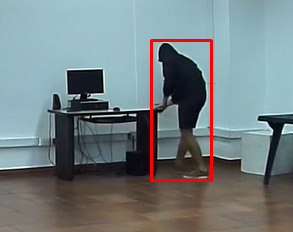Datasets
Open Access
Authentically Distorted Surveillance Videos Dataset
- Citation Author(s):
- Submitted by:
- Cesar Ardila Franco
- Last updated:
- Tue, 05/17/2022 - 22:21
- DOI:
- 10.21227/akyk-7b78
- Data Format:
- Link to Paper:
- License:
 1245 Views
1245 Views- Categories:
- Keywords:
Abstract
This Dataset contains "Pristine" and "Distorted" videos recorded in different places. The
distortions with which the videos were recorded are: "Focus", "Exposure" and "Focus + Exposure".
Those three with low (1), medium (2) and high (3) levels, forming a total of 10 conditions
(including Pristine videos). In addition, distorted videos were exported in three different
qualities according to the H.264 compression format used in the DIGIFORT software, which were:
High Quality (HQ, H.264 at 100%), Medium Quality (MQ, H.264 at 75%) and Low Quality
(LQ, H.264 at 50%).The recording of the videos was carried out in a semicontrolled space,
with the appropriate environment conditions that facilitate the generation of authentically
distorted videos. The "DIGIFORT" monitoring software is used to manage and record the videos.
For the labeling of each video we use the "DarkLabel" labeling software. For the videos editing
and processing the "MATLAB" computational tool is used. The dataset contains 160 "Pristine"
videos, 1450 "Exposure" videos, 1409 "Focus" videos and 1450 "Focus + Exposure" videos for a
total of 4476 videos. The recorded activities are: "Walking" (WL), "Leaving Package in a Public
Place" (LPP), "Passing Out" (PO), "Person Pushing Person" (PPP), "Person Running" (PR),
"Fighting in Group" (FG), "Robbery with Knife" (RK) and "Prowl" (PW). This Dataset is intended
to evaluate "Visual Quality Assessment" (VQA) and "Visual Object Tracking" (VOT) algorithms.
------------------------------------------------------------------------------------------------------------------------------
0. This Dataset is intended to evaluate "Visual Quality Assessment" (VQA) and "Visual Object
Tracking" (VOT) algorithms. It has 4476 videos with different distortions and their Bounding Box
annotations ([x(x coordinate) y(y coordinate) w(width) h(height)]) for each frame. It also contains
a MATLAB script which allows to generate the video sequences for VOT algorithms evaluation.
1. Move the "generateSequences.m" file to the "surveillanceVideosDataset" Folder.
2. Open the script and modify the next parameters according to your need:
%---------------------------------------------------------------%
%
%Sequence settings and images nomenclature %
imagesType = '.jpg'; %
imgFolder = 'img'; %
gtName = 'groundtruth.txt'; %
imgNomenclature = ['%04d' imagesType]; %
%
%--------------------------------------------------------------%
The last configuration will create a folder like this for each video:
0001SequenceExample (Folder)
- - img (Folder)
- - - - 0001.jpg (Image)
- - - - 0002.jpg (Image)
- - - - ....
- - - - ....
- - - - ....
- - - - 0451.jpg (Image)
- - groundtruth.txt (txt file: Bounding Box Annotations)
3. Press "Run" and wait until the sequences are built. The process can take a long time due to the
number of videos. You will need 33 GB for the videos, 30 MB for the Bounding Box annotations and 230
GB for the sequences (.jpg format).
--------------------------------------------------------------------------------------------------------------------------------------------
Dataset Files
generateSequences generateSequences.m (2.68 kB)
Open Access dataset files are accessible to all logged in users. Don't have a login? Create a free IEEE account. IEEE Membership is not required.
Documentation
| Attachment | Size |
|---|---|
| 36.2 MB |






